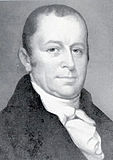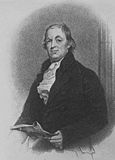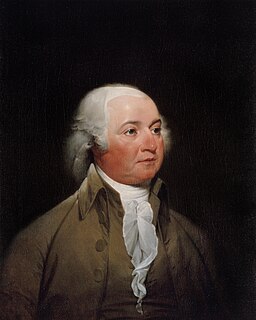
The United States presidential election of 1796 was the third quadrennial presidential election. It was held from Friday, November 4 to Wednesday, December 7, 1796. It was the first contested American presidential election, the first presidential election in which political parties played a dominant role, and the only presidential election in which a president and vice president were elected from opposing tickets. Incumbent Vice President John Adams of the Federalist Party defeated former Secretary of State Thomas Jefferson of the Democratic-Republican Party.

The United States presidential election of 1812, the seventh quadrennial American presidential election, was held from Friday, October 30, 1812 to Wednesday, December 2, 1812. Taking place in the shadow of the War of 1812, incumbent Democratic-Republican President James Madison defeated DeWitt Clinton, who drew support from dissident Democratic-Republicans in the North as well as Federalists. It was the first presidential election to be held during a major war involving the United States.

The United States presidential election of 1816 was the eighth quadrennial presidential election. It was held from Friday, November 1 to Wednesday, December 4, 1816. In the first election following the end of the War of 1812, Democratic-Republican candidate James Monroe defeated Federalist Rufus King. The election was the last in which the Federalist Party fielded a presidential candidate.

Elections to the United States House of Representatives for the 11th Congress were held in the various states between April 1808 and May 1809. The Congress first met on May 22, 1809.

The Pennsylvania gubernatorial election of 1799 was between two candidates. Incumbent governor Thomas Mifflin was not running. The race was between Federalist U.S. Senator James Ross and Democratic-Republican Thomas McKean. The retired Chief Justice of the Pennsylvania Supreme Court, McKean was a Federalist and a Mifflin ally, as both supported strong state executive power but rejected the domestic policies of the national government.
Elections to the United States House of Representatives in Pennsylvania were held on October 14, 1806 for the 10th Congress.
Elections to the United States House of Representatives in Pennsylvania were held October 9, 1810 for the 12th Congress. The Federalists were in decline in Pennsylvania at this time. In six of the eleven districts there were no Federalist candidates.
Elections to the United States House of Representatives in Pennsylvania were held October 11, 1808 for the 11th Congress.

The Pennsylvania gubernatorial election of 1820 occurred on November 7, 1820. Incumbent Democratic-Republican governor William Findlay sought re-election but was defeated U.S. Representative Joseph Hiester. Findlay entered the race with significantly reduced popularity. He had been renounced in the press as an opponent of democracy due to his nomination during the 1817 campaign by a group of party insiders. He additionally faced allegations of corruption over the misappropriation of funds during his tenure as State Treasurer, although all charges were dismissed during impeachment proceedings before the State Legislature. For this campaign, Findlay was chosen for a slot on the ballot at a popular convention of Democratic Republicans; Hesiter was selected at a separate convention of Federalists and "Old School Democrats". The sour state of the economy was a key factor in the defeat of the incumbent, as Pennsylvania was reeling from the effects of the Panic of 1819.
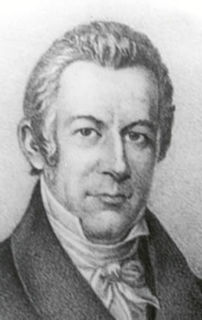
The Pennsylvania gubernatorial election of 1817 occurred on November 4, 1817. Incumbent Democratic-Republican governor Simon Snyder was not a candidate for re-election. Simon's preferred successor, State Treasurer William Findlay, was nominated as the Democratic Republican by a caucus of legislative leaders. Conversely, U.S. Representative Joseph Hiester was chosen as a candidate by the Democratic Republican's first popular nominating convention; he additionally gained the endorsement of the declining Federalists.
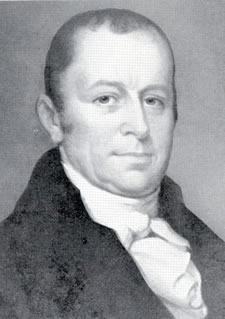
The Pennsylvania gubernatorial election of 1814 occurred on November 8, 1814. After contemplating retirement, incumbent Democratic-Republican governor Simon Snyder instead chose to run for reelection. He earned a third term as the state's executive after defeating Federalist candidate Isaac Wayne, a former member of the Pennsylvania State Senate.

The Pennsylvania gubernatorial election of 1811 occurred on November 5, 1811. Incumbent Democratic-Republican governor Simon Snyder won re-election over Federalist candidate William Tilghman, the Chief Justice of the Pennsylvania Supreme Court, by a wide margin. Two of the major policy goals on which Snyder campaigned were increasing spending for infrastructural upgrades and authorizing the transfer of governmental operations from Lancaster to Harrisburg.
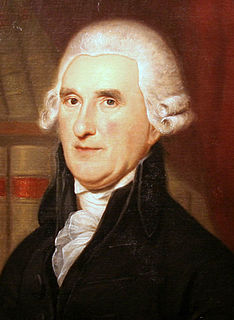
The Pennsylvania gubernatorial election of 1805 occurred on November 5, 1805. Incumbent governor Thomas McKean won a contentious election over the endorsed Democratic-Republican candidate, Speaker of the Pennsylvania House of Representatives Simon Snyder.

The Pennsylvania gubernatorial election of 1802 occurred on November 2, 1802. Incumbent Democratic-Republican governor Thomas McKean successfully sought re-election to another term. As occurred in his prior campaign, he defeated U.S. Senator James Ross, a Federalist.

The 1808 United States presidential election in Pennsylvania took place as part of the 1808 United States presidential election. Voters chose 20 representatives, or electors to the Electoral College, who voted for President and Vice President.

The Michigan gubernatorial election of 2014 took place on November 4, 2014, to elect the Governor of Michigan, concurrently with the election of Michigan's Class II U.S. Senate seat, as well as other elections to the United States Senate in other states and elections to the United States House of Representatives and various state and local elections.
As most Presidents have careers in politics and some lose re-election, there have been many elections lost by presidents of the United States.



